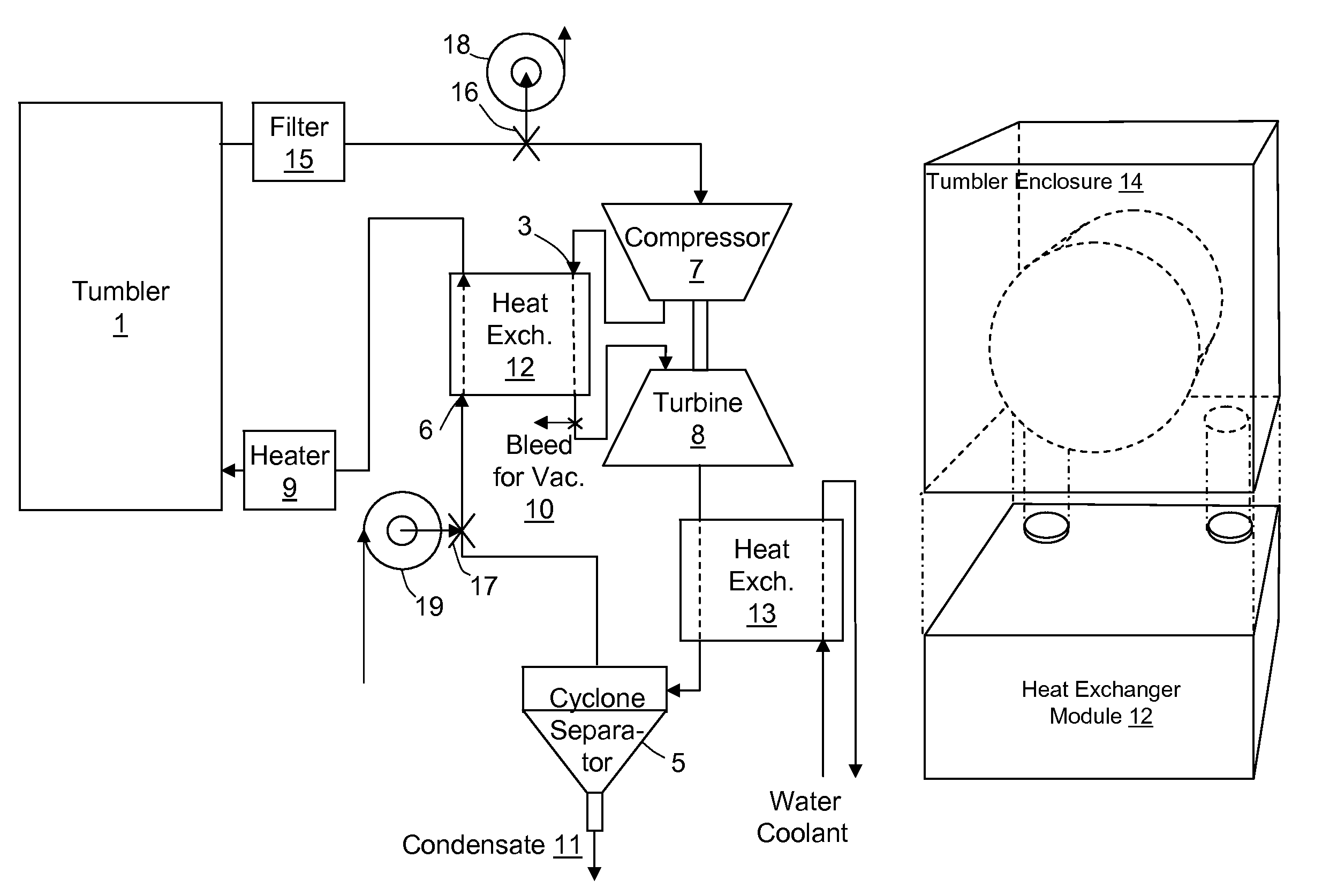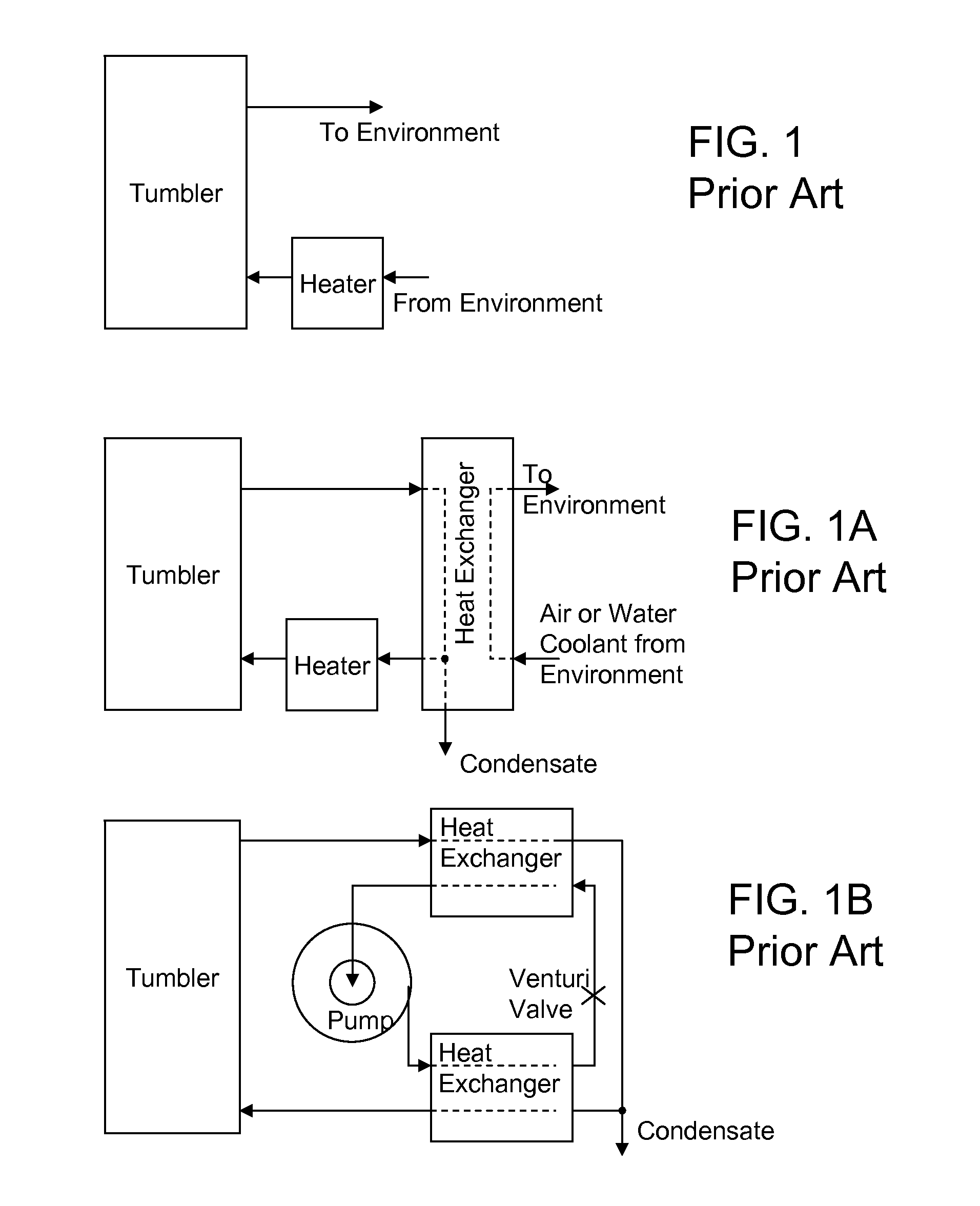Air cycle heat pump dryer
- Summary
- Abstract
- Description
- Claims
- Application Information
AI Technical Summary
Benefits of technology
Problems solved by technology
Method used
Image
Examples
Embodiment Construction
[0041]An embodiment of the invention is illustrated in FIG. 2. Clothes are placed in an enclosed tumbler 1. The air which is blown through it goes through the following:[0042]1. The air from the tumbler and laden with moisture is directed through a pump 2 which adiabatically compresses and heats it.[0043]2. The hot compressed and humid air then traverses the first side 3 of a heat exchanger where it loses its heat energy.[0044]3. The air is then allowed to expand adiabatically through a Venturi valve 4 where it loses more energy, cooling to a temperature significantly below its dew point.[0045]4. The cold air filled with condensed water is then directed through a separator 5 (for example a cyclone) that extracts the liquid water condensate.[0046]5. The air is then fed back into the second side 6 of the heat exchanger, where it recaptures some of the heat that it has previously lost;[0047]6. The warm air is then blown through the wet laundry in the tumbler 1 where it acquires some mo...
PUM
 Login to View More
Login to View More Abstract
Description
Claims
Application Information
 Login to View More
Login to View More - R&D
- Intellectual Property
- Life Sciences
- Materials
- Tech Scout
- Unparalleled Data Quality
- Higher Quality Content
- 60% Fewer Hallucinations
Browse by: Latest US Patents, China's latest patents, Technical Efficacy Thesaurus, Application Domain, Technology Topic, Popular Technical Reports.
© 2025 PatSnap. All rights reserved.Legal|Privacy policy|Modern Slavery Act Transparency Statement|Sitemap|About US| Contact US: help@patsnap.com



